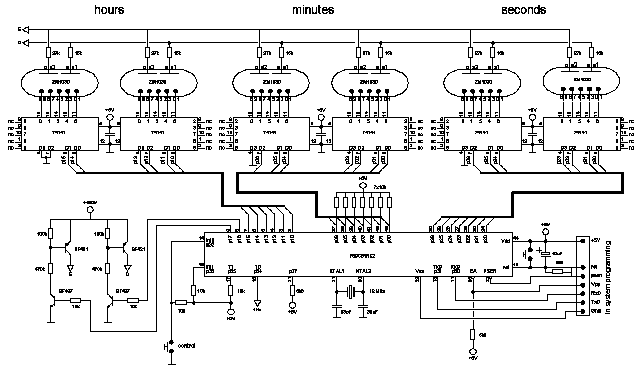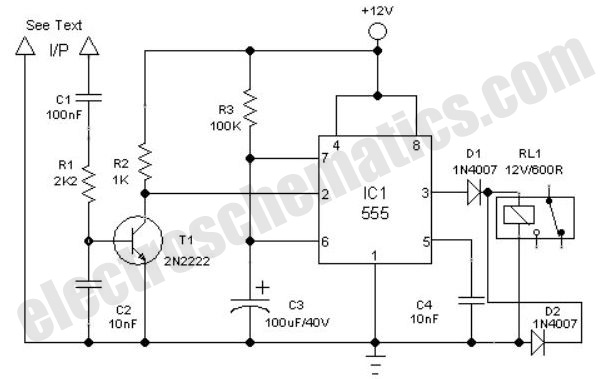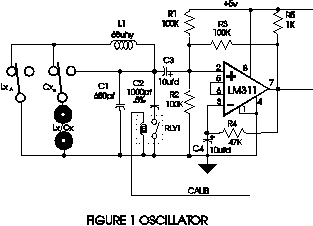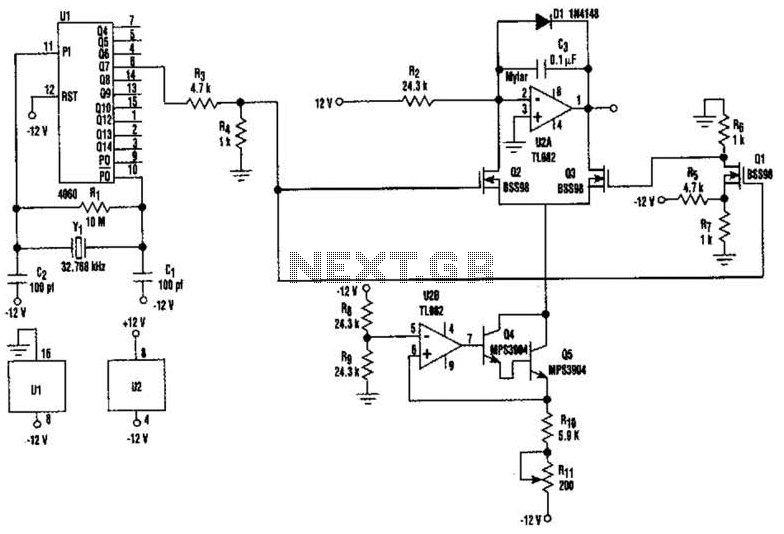
Decatron Clock Project
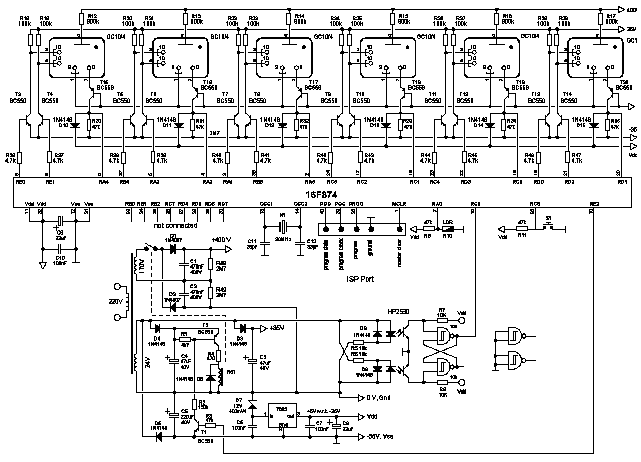
Instead of simply incrementing the time every new second, it would be beneficial to have a display of forward- and backward-spinning digits, gradually rolling out to the new time, similar to the reels of a slot machine. Decatrons are completely new and unfamiliar. How do they operate, and how can they be interfaced with a processor? Rather than working on this for a few months and then creating a new web page, it was decided to present this information in the form of a web log. The intention is to expand this page each time the project progresses. The decatron, like the E1T "scaling tube," predates the nixie tube, not necessarily by invention but certainly by application. The primary reason is that, in addition to being a display device, both the scaling tube and the decatron perform counting functions themselves, whereas nixie tubes require a significant amount of additional electronics to operate. Both are remarkable examples of ingenuity. The decatron was first introduced in a paper published in Electronic Engineering in May 1950 titled "The Decatron, A New Cold Cathode Counting Tube" by R. C. Bacon and J. R. Pollard from Ericsson Telephones Research Laboratories in Nottingham, England. The paper discusses the general operation, performance, and circuit requirements. The operation of the decatron is best described by the inventors: A cathode glow on one of a set of interconnected cathodes, arranged around a central common anode, is caused to transfer from one position to the next by applying controlling voltages to intermediate electrodes or "guides." This arrangement is clarified by considering accompanying figures. One figure illustrates, around the central anode disk A, a number of equidistant rods or wires (on a pitch circle of 20 mm diameter for the GC10A). These wires constitute thirty electrodes, including ten cathodes, ten guide 1 electrodes, and ten guide 2 electrodes. Nine of the cathodes are connected internally in a specified sequence. The tenth cathode is isolated and designated as the output or marking cathode. The ten guide 1 electrodes are internally connected, and similarly, the ten guide 2 electrodes are linked. Thus, the tube has five outputs: anode, output cathode, cathode ring, guide 1 ring, and guide 2 ring. In the assumed operation, if a discharge occurs between anode A and cathode k2, and a negative pulse of 120 volts is applied to the group of guide 1 electrodes, which were initially at +60 volts relative to cathode k2, the glow will transfer in a clockwise direction to electrode g1a. This means the glow discharge will preferentially move one position clockwise rather than two positions anticlockwise to electrode g1. If it is arranged that, simultaneously with restoring guide 1 to +60 volts, a similar pulse is applied to guide 2, the glow will move clockwise to electrode g2a. The two guide systems thus ensure the direction of motion of the discharge.
The decatron is a type of cold cathode counting tube that operates based on the principle of glow discharge. It consists of a central anode surrounded by multiple cathodes and guide electrodes. The cathodes are arranged in a circular pattern, allowing for the selective transfer of the glow discharge from one cathode to another. The unique design of the decatron enables it to function as both a display and a counting device.
In a typical application, the decatron can be connected to a microcontroller or processor, allowing for digital control of the glow discharge. The microcontroller generates the necessary control signals to manipulate the voltages applied to the guide electrodes. By carefully timing these signals, the microcontroller can create the desired visual effect of the digits rolling forward or backward, akin to a slot machine.
The performance of the decatron is influenced by several factors, including the applied voltages, the timing of the control signals, and the physical characteristics of the tube itself. The glow discharge is initiated by applying a high voltage to the anode, which ionizes the gas inside the tube, creating a conductive path. The glow can then be moved between the cathodes by controlling the voltages on the guide electrodes. This method allows for smooth transitions between numbers, enhancing the visual appeal of the display.
The decatron's ability to count is achieved through its unique design, which allows it to maintain the state of the glow discharge across its electrodes. This counting function can be utilized in various applications, including timers, counters, and other digital display systems. The integration of a decatron into a project requires careful consideration of the circuit design, including the necessary power supplies and control logic to ensure reliable operation.
Overall, the decatron represents a fascinating intersection of display technology and counting mechanisms, offering unique visual effects and functional capabilities that can be leveraged in various electronic applications.Instead of simply incrementing the time every new second, it would be great to have a display of forward- and backward-spinning digits, slowly rolling-out to the new time, a little bit like the reels of a slot machine. Having never encountered them, decatrons are completely new to me. How do they work, how to interface them to a processor Instead of working on it for a few months or so and then writing a new web-page on it, I decided to present this page in the form of a web-log. The idea is that this page is expanded every time the project has advanced a bit. Like the E1T "scaling tube" the decatron preceded the nixie tube, perhaps not by invention, but certainly by application.
The most likely reason is that, besides a being a display device, both the Scaling Tube and the Decatron perform the counting function themselves, whereas Nixie tubes require quite a bit of electronics to make them work. They are both small wonders of ingenuity. The Decatron was first announced in a paper in Electronic Engineering of May 1950 entitled: "The Decatron, A New Cold Cathode Counting Tube" by R.
C. Bacon and J. R. Pollard from Ericsson Telephones Research Laboratories, Nottingham, England [4]. The paper discusses the general operation, the performance, and the circuit requirements. The working of the Decatron is best explained in the words of the inventors: A cathode glow on one of a set of inter-connected cathodes, arranged around a central common anode, is caused to transfer from one position to the next by application of controlling voltages to intermediate electrodes or "guides". This arrangement will become clear by considering Figs. 2 and 3. Fig. 2 shows, around the central anode disk A, a number of equi-spaced rods or wires (on a pitch circle of 20mm.
diameter in the case of GC10A). These wires actually comprise thirty electrodes, of which ten are cathodes, ten are guide 1 electrodes, and ten guide 2 electrodes. Nine of the cathodes are connected internally in the sequence shown in part in Fig. 2. The tenth cathode is isolated and brought out separately, as the output or marking cathode. The ten guide 1 electrodes are connected internally, g1, g1a, g1b, etc. , and in the same way the ten guide 2 electrodes marked g2, g2a, etc. , are internally linked. Hence the tube has five outlets, comprising anode, output cathode, cathode ring, guide 1 ring and guide 2 ring.
Referring to Fig. 2, together with the simple circuit arrangement of Fig. 3, let it be assumed that a discharge is taking place between anode A and cathode k2. If a negative pulse of 120 volts is applied to the group of guide 1 electrodes (g1, g1a, etc. ) which were originally at +60 volts with respect to the cathode k2, a transfer of the glow will take place in a clockwise direction to electrode g1a. That is to say the glow discharge will transfer preferentially one position clockwise as opposed to two positions anticlockwise to electrode g1.
If it be arranged that simultaneously with the restoration of guide 1 to +60 volts, a similar pulse is applied to guide 2, the glow will move clockwise to electrode g2a. The function of the two guide systems is thus to render certain the direction of motion of the discharge.
When guide 2 is 🔗 External reference
The decatron is a type of cold cathode counting tube that operates based on the principle of glow discharge. It consists of a central anode surrounded by multiple cathodes and guide electrodes. The cathodes are arranged in a circular pattern, allowing for the selective transfer of the glow discharge from one cathode to another. The unique design of the decatron enables it to function as both a display and a counting device.
In a typical application, the decatron can be connected to a microcontroller or processor, allowing for digital control of the glow discharge. The microcontroller generates the necessary control signals to manipulate the voltages applied to the guide electrodes. By carefully timing these signals, the microcontroller can create the desired visual effect of the digits rolling forward or backward, akin to a slot machine.
The performance of the decatron is influenced by several factors, including the applied voltages, the timing of the control signals, and the physical characteristics of the tube itself. The glow discharge is initiated by applying a high voltage to the anode, which ionizes the gas inside the tube, creating a conductive path. The glow can then be moved between the cathodes by controlling the voltages on the guide electrodes. This method allows for smooth transitions between numbers, enhancing the visual appeal of the display.
The decatron's ability to count is achieved through its unique design, which allows it to maintain the state of the glow discharge across its electrodes. This counting function can be utilized in various applications, including timers, counters, and other digital display systems. The integration of a decatron into a project requires careful consideration of the circuit design, including the necessary power supplies and control logic to ensure reliable operation.
Overall, the decatron represents a fascinating intersection of display technology and counting mechanisms, offering unique visual effects and functional capabilities that can be leveraged in various electronic applications.Instead of simply incrementing the time every new second, it would be great to have a display of forward- and backward-spinning digits, slowly rolling-out to the new time, a little bit like the reels of a slot machine. Having never encountered them, decatrons are completely new to me. How do they work, how to interface them to a processor Instead of working on it for a few months or so and then writing a new web-page on it, I decided to present this page in the form of a web-log. The idea is that this page is expanded every time the project has advanced a bit. Like the E1T "scaling tube" the decatron preceded the nixie tube, perhaps not by invention, but certainly by application.
The most likely reason is that, besides a being a display device, both the Scaling Tube and the Decatron perform the counting function themselves, whereas Nixie tubes require quite a bit of electronics to make them work. They are both small wonders of ingenuity. The Decatron was first announced in a paper in Electronic Engineering of May 1950 entitled: "The Decatron, A New Cold Cathode Counting Tube" by R.
C. Bacon and J. R. Pollard from Ericsson Telephones Research Laboratories, Nottingham, England [4]. The paper discusses the general operation, the performance, and the circuit requirements. The working of the Decatron is best explained in the words of the inventors: A cathode glow on one of a set of inter-connected cathodes, arranged around a central common anode, is caused to transfer from one position to the next by application of controlling voltages to intermediate electrodes or "guides". This arrangement will become clear by considering Figs. 2 and 3. Fig. 2 shows, around the central anode disk A, a number of equi-spaced rods or wires (on a pitch circle of 20mm.
diameter in the case of GC10A). These wires actually comprise thirty electrodes, of which ten are cathodes, ten are guide 1 electrodes, and ten guide 2 electrodes. Nine of the cathodes are connected internally in the sequence shown in part in Fig. 2. The tenth cathode is isolated and brought out separately, as the output or marking cathode. The ten guide 1 electrodes are connected internally, g1, g1a, g1b, etc. , and in the same way the ten guide 2 electrodes marked g2, g2a, etc. , are internally linked. Hence the tube has five outlets, comprising anode, output cathode, cathode ring, guide 1 ring and guide 2 ring.
Referring to Fig. 2, together with the simple circuit arrangement of Fig. 3, let it be assumed that a discharge is taking place between anode A and cathode k2. If a negative pulse of 120 volts is applied to the group of guide 1 electrodes (g1, g1a, etc. ) which were originally at +60 volts with respect to the cathode k2, a transfer of the glow will take place in a clockwise direction to electrode g1a. That is to say the glow discharge will transfer preferentially one position clockwise as opposed to two positions anticlockwise to electrode g1.
If it be arranged that simultaneously with the restoration of guide 1 to +60 volts, a similar pulse is applied to guide 2, the glow will move clockwise to electrode g2a. The function of the two guide systems is thus to render certain the direction of motion of the discharge.
When guide 2 is 🔗 External reference

